#Elevate Success at the EMERGE Summit

“Be vulnerable,” advised Metro EDGE’s 2019 Young Professional of the Year, Verna Sulpizio Hull. As the Welcoming Speaker for the 2020 Metro EDGE EMERGE Summit, Hull offered a much needed reminder for me and other Summit attendees to remain open to new things. After all, it was clear to everyone that this year’s EMERGE Summit was different: the world was in the middle of a pandemic, and so Northern California’s largest conference for emerging leaders had to go virtual. Nevertheless, with this year’s theme as #Elevate, that did not stop the Sacramento Metro Chamber Foundation’s Metro EDGE from organizing an impactful 2020 event for young leaders throughout the Sacramento region.
On the morning of September 17th, four of my Valley Vision colleagues and I tuned in to the EMERGE Summit, exchanging remarks via our group chat and excited to interact with the event’s virtual format. The day’s speakers and breakout sessions were to be presented through an event and conference app, which immediately allowed us to engage with emerging professionals via virtual networking and the event’s main page. As described by Valley Vision Project Associate Houa Vang, “I was skeptical at first because this was my first time attending a virtual conference, but was taken aback on the superb coordination and transitions between speakers, music during breaks, and breakout sessions.” Project Manager Grace Kaufman further said, “The sessions were thoughtfully designed, the eclectic array of speakers were inspiring, and the mix of local music in between sessions kept me glued to my screen and engaged for the entirety of the conference.”
One of those engaging speakers was Unseen Heroes’ Roshaun Davis, a brand development professional whose steps to building community helped me see the importance of nurturing in my work. Followed by keynote speaker and multimedia journalist Marianna Sousa, the event continued to bring attention to equity and social healing, which I couldn’t help but see as very fitting with recent events. “Restoration before reputation” stated Sousa, as she went on to explain the importance of self-care and addressing trauma as young professionals. The year 2020 had brought a global pandemic, social unrest towards racial injustice, and many other stressful events that I saw deserved a critical eye on how we took care of ourselves and our communities.
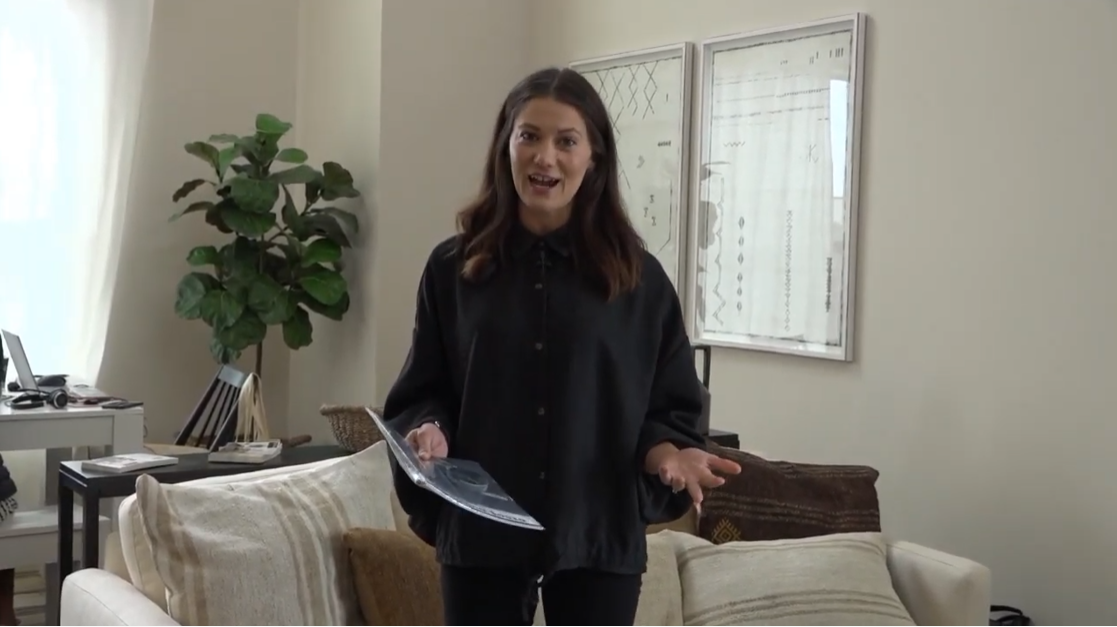
As the day unfolded, engaging speakers were interwoven with insightful breakout sessions on topics such as data challenges with Pantelis Loupos and design thinking with Samantha Contreras. My third breakout session was on moving racial justice forward with Jackie Cole and others from Fresno State, SACOG, and California Coalition for Rural Housing. I was glad to see that EMERGE Summit addressed the issue of racial justice head on with a session such as this, while having speakers who were committed to the issue. Overall, EMERGE’s 2020 breakout sessions covered a wide range of interesting and relevant topics. “Regardless of where you were on your career path or the particular field you were interested in, there was a session for you.”
In closing, the EMERGE Summit left my Valley Vision colleagues and I motivated to continue our work throughout the region. Our motivation was captured well by Tucker Bryant’s inspiring spoken word at the end of the Summit, “Dear 2020.” “This isn’t a quarantine; this is a hibernation,” was a hopeful verse that stuck with me as my colleagues and I continued to navigate our roles as emerging professionals in a rapidly changing world. As described by Project Associate Isa Avanceña, “The spoken word at the end of the Summit expressed so eloquently the emotional toll that this pandemic has taken. More importantly, it highlighted the resilience that our communities are demonstrating as we weather the storm. It was the perfect “mic drop” ending to an already incredible day.”
My colleagues and I were very fortunate to have had this experience and would like to express our gratitude to the Metro Chamber and its event sponsors for organizing an impactful virtual conference as an epicenter for young professionals to exchange ideas, learn from each other’s experiences, and be inspired to shape the future.
To keep up with Valley Vision’s work to advance livability in the Sacramento region, subscribe to our Vantage Point email newsletter!
Jesse Flores is a Valley Vision Project Associate supporting the 21st Century Workforce and Clean Economy Impact areas.
Capital Region’s Workforce Boards Provide COVID-19 Relief

The COVID‐19 pandemic has created a significant disruption to the labor force, wreaking havoc on both businesses and community members. The Capital Region’s Workforce Boards are specifically positioned to provide much‐needed assistance in times like these. Our collective goal is to support the overall economic health of the region by matching employer needs for local talent with resident needs for gainful employment and career mobility. During this current crisis and ongoing, we ensure workers are job ready and preparing for the future of work to help our communities recover and thrive.
Our local, federally‐funded workforce system has been providing services to both job seekers and employers for decades, and remains one of the best assets in the Capital Region. The four Workforce Development Boards ‐ the Sacramento Employment and Training Agency (SETA)/Sacramento Works, Golden Sierra Job Training Agency, Yolo County Workforce Development Board, and North Central Counties Consortium (NCCC), cover a nine‐county region and oversee a network of over 20 America’s Job Centers that connects over 68,000 job seekers annually with much needed employment and related resources.
These business‐led boards are a resource to local employers, providing assistance with job postings, customized recruitment events, applicant screening services, skills assessments, (virtual) career fairs, and resources that promote business success. Businesses also benefit by increasing the breadth and diversity of their talent pool. Job retention is improved by candidates receiving access to ongoing job coaching and supports that improve their success in the workplace. Additionally, job seekers and the underemployed receive access to demand‐driven, relevant skills training to regain employment in a growing field and improve their earnings potential.
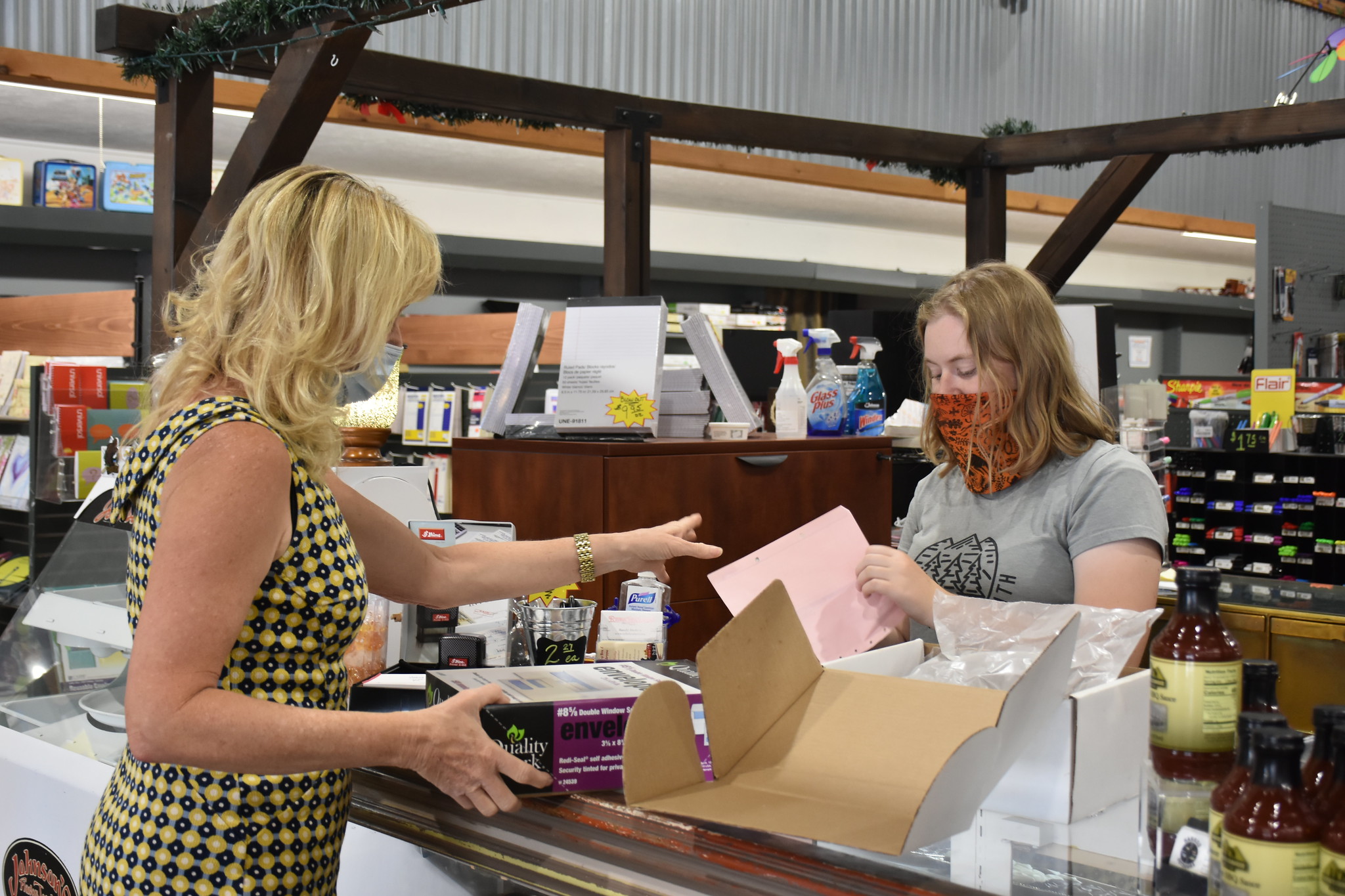
The Centers are typically located in neighborhoods and areas with high concentrations of poverty and unemployment. The Centers offer no cost workforce development resources to everyone, with a focus on individuals with significant barriers to employment, such as basic skills deficient, disadvantaged youth, public assistance, homeless, ex‐offenders, etc. and the underemployed. Over 86% of individuals receiving services have significant barriers to employment, and a majority come from underrepresented minority groups.
The Capital Region’s Workforce Boards are committed to the region’s success as conveners, brokers, leaders and partners on many workforce development initiatives that strengthen our local economy. We partner with business, education, labor unions, economic development and community based organizations to align efforts, deepen impact, and improve quality of life in our region. To learn more about the Capital Region’s Workforce Boards, please go to:
- sacramentoworks.org
- goldensierra.com
- yoloworks.org
- northcentralcounties.com
- valleyvision.org
- capitalregionworkforceboards.com
Rick Wylie, President, Villara Corporation Chair, Sacramento Works, Inc., Board
Rick Larkey, Technical Director, North State Building Industry Foundation Chair, Golden Sierra Workforce Board
Kenneth Garrett, CEO, All Phase Security, Inc. Chair, Yolo Workforce Innovation Board
John Fleming, Director of Planning & Development, Ampla Health Chair, North Central Counties Workforce Board
Continuing Our Work Toward “Broadband for All”

As our region grapples with the COVID-19 pandemic and its effects on daily life and the economy — now compounded by the ongoing wildfires — the digital divide continues to grow. The ability to do distance learning, telecommuting, and telehealth is critical, and it is becoming increasingly clear that there can be no real equity without ubiquitous broadband. State, regional, and local solutions must be pursued concurrently, in an “all hands on deck,” multi-pronged approach.
State-level updates
On August 14, Governor Gavin Newsom issued Executive Order N-73-20, to address the broadband access, adoption, and training needs of Californians — all made more urgent by the COVID-19 pandemic. The following are some of the Order’s major provisions:
- The order directs the California Broadband Council (CBC) to create a new State Broadband Action Plan by December 31, 2020, incorporating a goal of 100 Mbps download speed for infrastructure investment. The Plan will include a roadmap to accelerate deployment and adoption of broadband by state agencies; support such deployment and adoption by local governments; and provide publicly accessible information on all federal and state funding opportunities.
- The Public Utilities Commission (CPUC) is directed to lead broadband data aggregation and mapping efforts, and to provide information on public and private broadband network infrastructure and the cost of deploying network components. This effort will be supported by the California State Transportation Agency and other relevant state agencies; local and tribal governments; and regional consortia, like the Connected Capital Area Broadband Consortium (CCABC), managed by Valley Vision.
- The California Governor’s Office of Business and Economic Development (GO-Biz) is directed to identify funding opportunities to support broadband, equipment, and digital literacy, in collaboration with all cabinet-level agencies, independent departments, and independent constitutional officers.
In addition to these major provisions, the Order directs other state agencies to address the need for deployment and adoption by activating policies and leveraging resources — with particular emphasis on connecting residents with affordable internet service offerings, and ensuring that students have the connectivity and devices necessary for distance learning.
On August 26, the CBC held a special session focused on the planning and implementation of the Governor’s Executive Order. CBC members and a wide range of broadband stakeholders attended the virtual meeting and provided input. The session generated the following proposed approach:
- Developing an outline;
- Articulating a vision;
- Compiling a fact base;
- Developing a timing and cost model;
- Mapping out funding and actions for 2021;
- Conducting research on adoption gaps; and
- Facilitating stakeholder sessions with local governments and the private sector.
The regional broadband consortia, including the CCABC, will continue to actively support these efforts.
Valley Vision has been working with the office of Assemblymember Cecilia Aguiar-Curry (Winters), the California Emerging Technology Fund, and a statewide network of more than 40 partners to support AB 570 – the Internet for All Act of 2020. AB 570 prioritizes the deployment of broadband infrastructure in the state’s most vulnerable, unserved, and underserved rural and urban communities. It extends the collection of funds for the California Advanced Services Fund (CASF), to provide grants to bridge the Digital Divide. While the next stage of the legislative process is yet to be determined, the bill has helped make the case to the Legislature and Governor’s Office for increasing funding, to meet the needs that California is facing now and into the future.
County-level efforts
As manager of the CCABC, Valley Vision hosted a webinar on August 11 on “Community Broadband in Yolo County,” in partnership with the Woodland Technology Alliance. The webinar was a conversation about the current state of the county’s technical infrastructure, as well as solutions to address the community’s broadband gaps. The webinar was a starting point for further exploring innovative strategies, and panelists represented several sectors of the region, including the local government, school district, and state government. A full recording can be found here, and a summary of the discussion can be found here. Valley Vision continues to work with Yolo and other counties to bring these issues to the forefront, and convene partners, stakeholders, and community members to build consensus and take next steps.
Ground truth testing with CalSPEED
Valley Vision is working with local partners and communities from our region to demonstrate the need for better internet service in the region. Community members are encouraged to download the CPUC’s CalSPEED app, which securely tests residential and mobile broadband speeds. Results from the speed test crowdsource a statewide coverage map to inform infrastructure investments. A flyer containing information on the CalSPEED test can be found here.
Additionally, the CPUC, in partnership with CSU, Chico and CSU, Monterey Bay are looking for volunteers to take part in the CalSPEED Home Broadband Study — a statewide effort to collect quality measurements utilizing the new CalSPEED Home Measurement Device.
Please share this information with your partners, stakeholders, and networks.
Low-cost internet service programs
In response to the increased need for distance learning, telecommuting, and telehealth capacity, several Internet Service Providers have begun offering low-cost internet service to families for qualifying low-income households. More information can be found here and here. Please share this information with your partners, stakeholders, and networks, to make sure that all community members are made aware of this option.
This blog focuses on just some of the updates at the state, county, and local level. To continue staying up to date with all of the region’s broadband efforts, subscribe to Valley Vision’s e-Connect email newsletter!
Trish Kelly is Valley Vision’s Managing Director, leading its food, agriculture, workforce, and broadband initiatives.
David Espinoza is a Valley Vision Project Leader managing broadband projects and other initiatives in the Innovation & Infrastructure impact area.
Isa Avanceña is a Valley Vision Project Associate supporting the Board of Directors, and the Innovation & Infrastructure and Leadership and Civic Engagement Impact areas.
Innovative Partnership Will Build a Roadmap to a Resilient Workforce
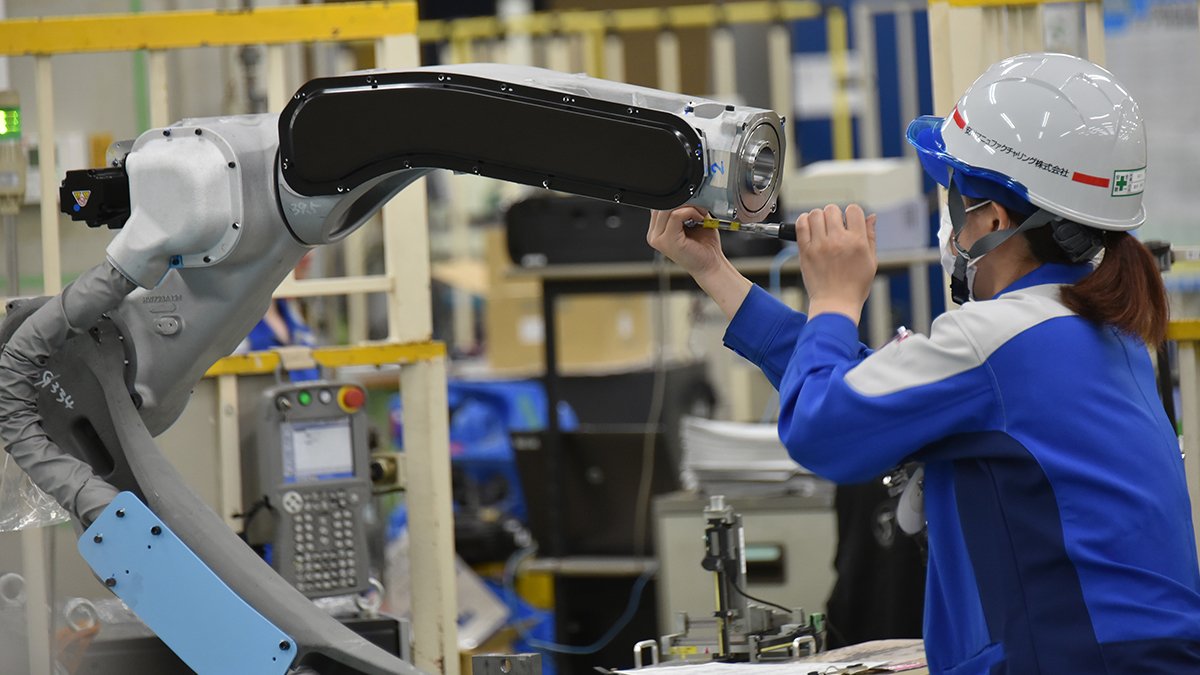
Thanks to funding committed by the City of Sacramento CARES Act program, Valley Vision is excited to announce a new partnership with Burning Glass Technologies to support upskilling, digital skills, and re-employment in the City of Sacramento, targeted at those impacted by COVID-19.
Even before COVID-19 struck, we knew a third of the jobs in the Sacramento region were at high risk of automation and digital skills are key to social mobility. COVID-19 is accelerating those trends and increasing the pace and intensity of economic disparities – especially for vulnerable populations, including people of color and women. A key challenge has been to create an actionable roadmap to understand where the opportunities are to move low wage/high risk jobs to more resilient, higher wage jobs that create social mobility. Additionally, while we understand digital skills are needed, we don’t have a clear or comprehensive enough picture of what digital skills are needed for high growth jobs and where people can go to gain those skills.
Together, Valley Vision and Burning Glass Technologies will create actionable research assets to connect these dots. The three key focus points for our rapid response research assets include: (1) a report that translates high risk/high unemployment occupations with skills-adjacent occupations that are lower-risk, stable, or growing in demand; (2) an identification of current and emerging digital skills needs by industry and target occupations to inform short-term training and reskilling opportunities for rapid re-employment; and (3) implementation strategies to inform re-employment and reskilling strategies to address job loss, especially for those in underinvested neighborhoods and those most intensely impacted by COVID-19.
Matt Siegelman, CEO of Burning Glass Technologies is also excited about the research investment and the partnership, “To ensure that workers in the Sacramento region can position themselves for the high mobility opportunities that are on the way, it’s crucial to have an accurate assessment of how automation will impact work and what new digital skills will be in demand. We are excited to partner with Valley Vision in developing a clear and actionable basis for empowering the workforce of this highly dynamic region.”
Burning Glass Technologies, located in Boston, is an analytics software company powered by the world’s largest and most sophisticated database of labor market data and talent. It tracks 3.4 million job listings daily, across more than 50,000 job boards and corporate sites – using the power of big data to capture market activity with enough specificity to enable companies to take a data-driven approach to workforce planning, and enable education and governments to better align their programs with the job market. Burning Glass was recently touted in Forbes as one of the “preeminent data analytics firms worldwide in the employment field.”
The Capital region needs to move rapidly to address the twin workforce challenges: the unfolding crisis of COVID-19, and the accelerating pace of technology disruption and skill automation. The new partnership with Burning Glass deepens Valley Vision’s work in this vital impact area and will position the City of Sacramento, employers, educational institutions, and workforce systems to rapidly and accurately respond to these dual challenges.
To keep up with Valley Vision’s work to advance a future-ready workforce in the Sacramento region, subscribe to our 21st Century Workforce email newsletter!”
Evan Schmidt is Valley Vision’s Chief Executive Officer.
New Greater Sacramento Region Comprehensive Economic Development Strategy (CEDS) Approved by U.S. Economic Development Administration
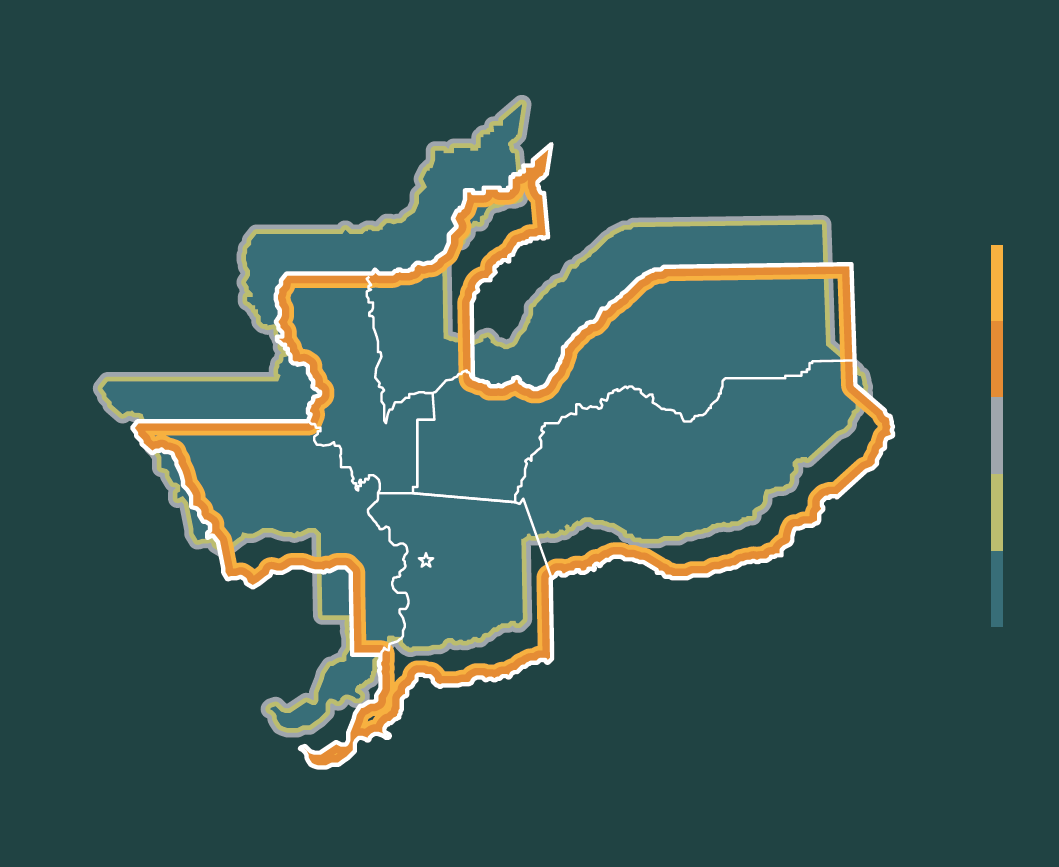
Valley Vision is extremely pleased to report that the Economic Development Administration (EDA), U.S. Dept. of Commerce, has officially approved the Greater Sacramento Region’s Comprehensive Economic Development Strategy (CEDS), known as the Prosperity Strategy. It will be current for five years and provides eligibility for EDA funding for its many programs supporting regional economic resiliency, innovation and recovery, across the six-county region.
The CEDS is the culmination of two years of intensive collaborative research and strategic planning led by a partnership of the Greater Sacramento Economic Council, the Sacramento Metro Chamber of Commerce, the Sacramento Area Council of Governments (SACOG), and Valley Vision, with funding support from EDA. Building upon a call to action from an assessment of the regional economy by the Brookings Institution in 2018, the CEDS contains six core strategies and related initiatives, within a framework of inclusive economic development to drive equitable and sustainable prosperity. The CEDS also follows upon the foundation built by the previous CEDS, Next Economy.
We’re grateful to the more than 400 community leaders and representatives across the region who contributed their valuable ideas, expertise and guidance throughout the process, including members of the CEDS Steering Committee. The CEDS is a living document, meant to be updated to reflect current economic conditions, to guide investments toward impactful and meaningful outcomes, and to track progress toward key initiatives and goals. Given the realities of COVID-19, the partners have created a short term “Bridge to Action” for inclusive economic recovery and growth – The Path Forward.
The partners along with the Sacramento Asian-Pacific Chamber of Commerce are committed to advancing the wellbeing of the region through collaborative and shared implementation of the CEDS. EDA will continue to be a valued partner in this process. EDA’s approval letter stated: “We commend your organization and your regional partners for this excellent effort, and we look forward to working with you as you continue to address the economic development planning and implementation needs of the region.” Please click here for the full CEDS and the Path Forward, and contact Valley Vision if you need information on EDA applications and/or letters of support. We welcome your participation and input, so please be in touch as we all work together for the future of our region.
Trish Kelly is Valley Vision’s Managing Director, leading its food, agriculture, workforce, and broadband initiatives.
Regional COVID-19 Resilience Poll Reveals Local Community Stresses, Responses

July 15, 2020 – Valley Vision has published the COVID-19 Resilience Poll this week in partnership with Capital Public Radio. This polling report is focused on understanding experiences, impacts, and attitudes about COVID-19 from residents in our region. The COVID-19 Resilience Poll is a demographically representative survey of the eight-county region (Sacramento, Yolo, El Dorado, Placer, Yuba,Sutter, Solano, and San Joaquin) and reported a margin of error of +/-3%. You can find the full COVID-19 Resilience Poll here.
“This survey, and the two more to come in this series, will help us understand and navigate the challenges ahead as we aim to not just recover from the setbacks of COVID-19, but also reimagine a more equitable, sustainable, and just future,” noted Evan Schmidt, CEO of Valley Vision. “Having an in-depth understanding of how the coronavirus impacts the people and communities we serve is vitally important to our public service mission,” said Jun Reina, newly appointed executive vice president and general manager of CapRadio, of the partnership with Valley Vision.
The poll results identify the severe impacts on people in our communities – including their mental, physical, and emotional health; their daily life and routines; and their economic security. For example, nearly half of respondents said they had lost income because of fallout from the virus, which since March has shuttered many businesses and forced most people to stay at home.
Further, different communities are experiencing markedly different realities, with deep disparities in the intensity of concern and impact across different racial and ethnic lines. “We’re all in this together but we are experiencing it differently,” said Shannon Williams, director of the Institute for Social Research, pointing out that many “essential” and front-line workers are people of color and workers with lower incomes who cannot perform their jobs virtually and have higher risks of virus exposure. “Often in this country, people of color don’t have the same opportunities and resources as others,” Williams continued. “This data shows how that is playing out with regard to the pandemic.”
There is also a significant element of political polarization within the region, with many respondents critical of leadership at various levels – whether it is because they think that leadership has failed to deliver an effective response or because they think the response is over blown and creating more harm.
The detailed poll results are accessible in several ways:
- As of today, the complete poll report can be downloaded from Valley Vision’s website: https://www.valleyvision.org/resources/the-covid-19-resilience-poll/
- Ongoing coverage from CapRadio can be found at https://www.capradio.org/resilience
- On Thursday, CapRadio will host a virtual event focused on the impact of COVID-19 on communities of color: https://www.capradio.org/articles/2020/07/13/live-conversation-covid-19-communities-of-color
- On July 31, Valley Vision will host a webinar providing an overview of the findings: https://us02web.zoom.us/webinar/register/WN_Qlsn5_lKSy-b8LGt1GbgCw
Additionally, Valley Vision’s polling partners have each issued their own press releases.
- CapRadio’s is available on their website: https://www.capradio.org/about/press/2020/capradio-and-valley-vision-partner-to-launch-covid-19-resilience-poll/
- The Institute for Social Research’s is available on the Sacramento State website: https://www.csus.edu/news/articles/2020/7/15/Pandemic-has-disrupted-life-in-the-region,-survey-finds-.shtml
About Valley Vision: For 25 years Valley Vision has helped governments, businesses, foundations and community groups better understand our region and its people through high quality research. By uncovering common ground facts using scientific opinion polls, focus groups, community needs assessments, best practice reports and other research tools, Valley Vision is a trusted interpreter, commentator, forecaster and work partner for community inspired solutions.
# # #
New Beginnings

I’m very excited to be writing to you today as Valley Vision’s new CEO. After six years at Valley Vision, most recently as the Director of Research and Strategy, I’m well acquainted with and fully committed to Valley Vision’s triple bottom line values of economic prosperity, social equity, and environmental sustainability to create livable communities. I’m also very aware that I’m coming into this leadership position at a difficult time in our history. As I begin my tenure as CEO, here is what I believe Valley Vision will need to focus on for the next three months and beyond, as we continue to navigate turmoil and challenges to our communities, economy, and well-being.
- Work from our strengths to be of service: Valley Vision is a servant leadership organization – we act as a regional steward to be of service to the people and places of our region. We are at our best when we are driving and catalyzing collaboration, advancing cutting edge applied research, and inspiring communities and leadership. With this in mind, we’ve prioritized a specific set of collaborative work to address challenges of the moment: creating an inclusive economy to support the region, creating pathways to future jobs, advancing digital inclusion for all, and increasing broadband access. The problems we face are complex and broad – Valley Vision will do best to focus our actions where we can be effective and valuable using our strengths to solve pressing issues.
- Do the next right thing: In this time of deep uncertainty, we act from our values and integrity and put one foot in front of the other to do the next right thing, even when it is hard or the big picture is unclear. In early Spring, that meant retreating to our homes to work and aiding in emergency response as we could. This summer, that has meant reflecting on how we can more deeply focus on racial justice, including participating in in-depth racial equity training during the month of July and developing concrete plans for ensuring that racial equity is central to our mission and apparent in the ways we recruit and empower diverse staff and the ways we advance our work. In the face of shifting conditions and difficulty, it is important to keep moving forward and meet each new challenge with compassion and humanity.
- Take the opportunity to reimagine: Change is knocking on our door, are we going to listen? COVID-19 has illuminated weaknesses in our systems. Let’s not rush to restore as we move forward in recovery – rather, let’s reimagine a better, more equitable future that reflects the world we need now, not the legacy of the past. The pain that has brought about a more widespread awareness of social injustice can pave the way for needed systemic changes to create a more just society. The pivot towards remote education can pave the way to more accessible and tailored educational systems that meet the needs of more students. The sudden grounding to home can create a path to more telework opportunities in the long term, reducing pollution and climate change impacts. These opportunities to change are here, it is up to us to seize them.
The job ahead won’t be easy and the conditions are as complex and difficult as I’ve seen in my lifetime. Since the announcement of my new position as CEO, I have been grateful for the expressions of support of many leaders and community members in our region. I know that I will continue to rely on that support, just as people in this region can rely on me. Grappling with the challenges that we face in the region will require that we do this together, working to reimagine and create a future that is better than our past.
Evan Schmidt is Valley Vision’s Chief Executive Officer.
Those Were the Days…
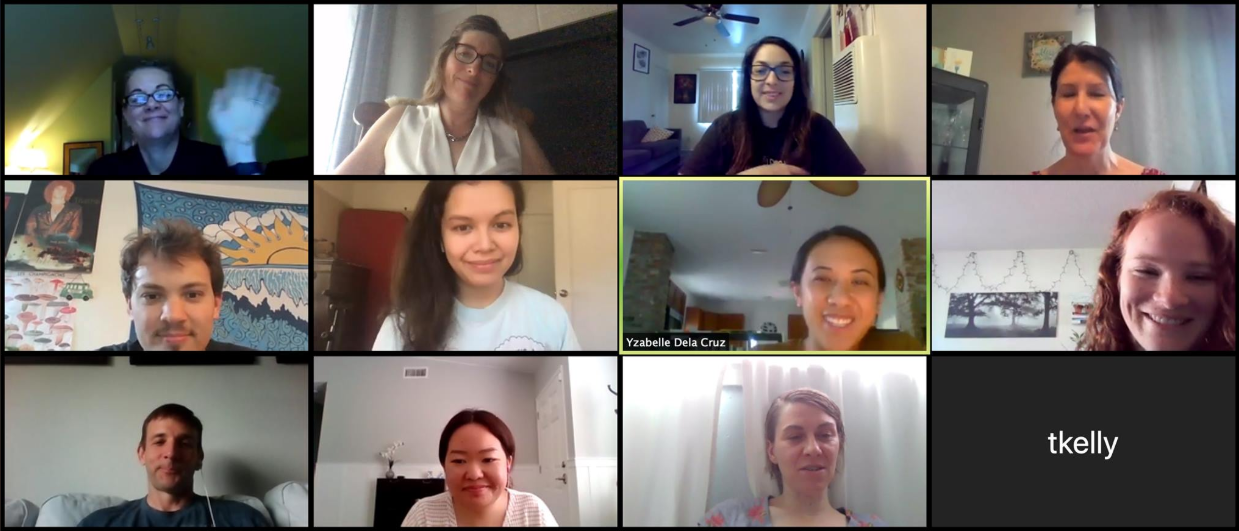
My term as Interim CEO ends on June 30, as the organization welcomes Evan Schmidt as its next CEO. Although it’s been a five-month span, my thoughts about this Interim CEO period are centered on the four weeks beginning in mid-March – that concentrated period of intense upheaval, uncertainty, and ceaseless sudden changes. The memory of what it actually felt like to live those days has ebbed (the same protective mechanism that fades the memory of childbirth, perhaps?). But four strong messages from those weeks continue to stick:
Know the risks but aim for the opportunities. Like all organizations, we quickly conducted some COVID-impact financial stress tests. It’s only prudent, in a time like this, to figure out what bad things might happen and what you would do about them, and the effort gave us good insights. But as important as it is to know the risks, it’s just as important to continue to aim for potential and opportunity. Balancing worry with hope – creating informed optimism – is steadying in unsteady times.
Remote working relationships can be “more real.” Working remotely, we’ve all seen more of each other’s whole lives during these months than before. Not just random portions of our homes, but also the kids, partners, and pets that we share them with. As well, because we were all adjusting to the tumultuous changes at the same time, meetings I was part of paused often to just process, together, the personal impacts of so much change and worry. Acknowledging the whole life that we each have is more complete and honest, even though it’s happening in little Zoom boxes on our screens.
There is strength in working for the collective good. We Americans tend strongly toward values of individualism and independence, yet this virus has reminded us that we are also interdependent and social beings. To a degree not seen in a generation, we have needed to work together, and to make broad societal and personal sacrifices for our collective, species-wide benefit. This has been hard to do, and hard to sustain, but has also been inspiring and confidence-building.
Ultimately, we are all more capable and resilient than we know. Beginning in those weeks of March, we’ve all caught glimpses of the potential and capacity within us all. We all adapted, innovated, and persevered at all the levels of our lives simultaneously, and at breakneck speed. Over the span of days, organizations moved entirely online and remote; businesses closed and laid off employees; parents juggled work and kids simultaneously; families began struggles with unemployment and finances; governments and nonprofits created short-term support programs out of whole cloth and launched them within days; and so much more. Has it been painful, heartbreaking, ugly, and confusing? Without doubt, and none of it would ever be wished for. But even so, and amid such need, we have all been showing our individual and collective spirits, strengths, and abilities.
I am grateful to have been trusted to lead this organization, in this community, during this time, and look forward to what we all continue to accomplish – together.
Meg Arnold is Interim CEO of Valley Vision through June 30.
Valley Vision Selects New CEO
Our Path Forward
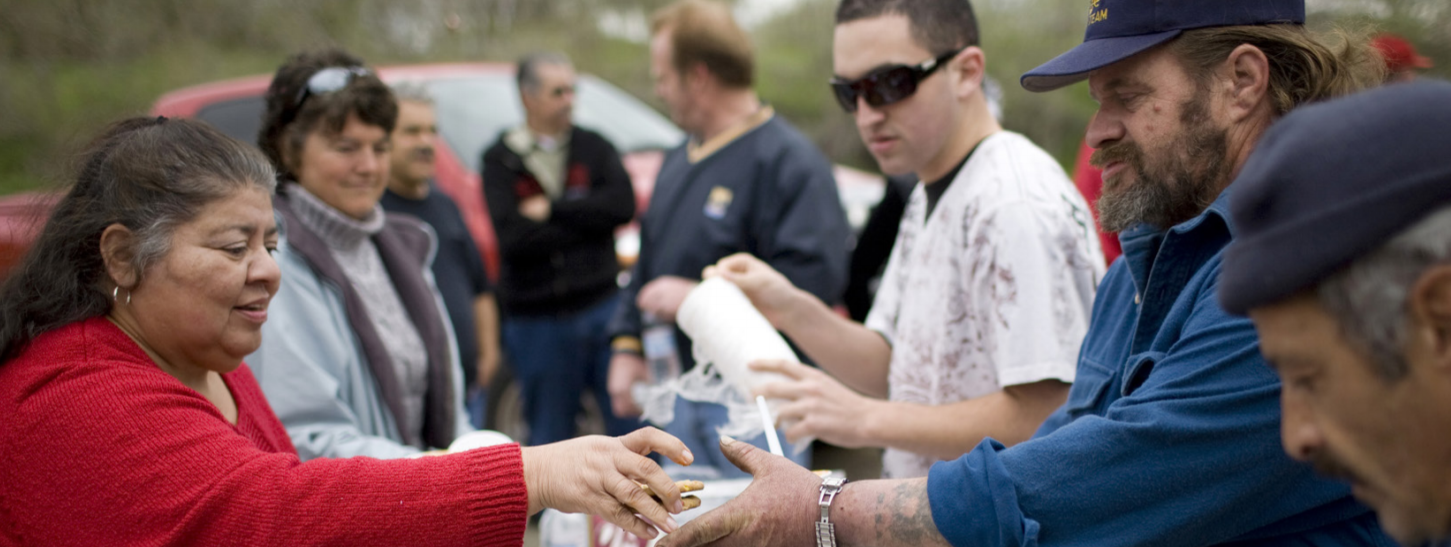
Last week, a friend and colleague wrote me about George Floyd’s killing and its aftermath. She offered a different quote by Dr. Martin Luther King, Jr. than we referenced in our last Vantage Point, and reminded me that his “messages around economic justice are often overlooked, yet inseparable from social justice solutions.”
Valley Vision is a “triple bottom line” organization, which is a wonky way to say that we hold three co-equal priorities in our work: equity, the economy, and the environment. Our work strives to balance the interconnections between these three priorities, and recognizes that they are inseparable from each other.
In late May, Valley Vision and three partners launched “Our Path Forward: The Prosperity Strategy,” which is our region’s first intentionally inclusive economic development strategy. The strategy resulted from the findings of the 2018 Brookings Institution report, which made clear the entrenched inequities in our communities – people who are disadvantaged by income, education, employment, connectivity, and opportunity. These inequities cut predominantly along lines of race and ethnicity, and also exist across and within urban and rural communities.
It was clear, in the Brookings report, that even as we seek a strong and healthy economy built on our existing strengths, ensuring that opportunity is truly available to all is absolutely imperative for people and the communities in which they live as well as for the long-term strength and resilience of our economy.
There are many resources about “Our Path Forward” online, including the six core strategies that will allow us to scale business, enable people, and build place. You can visit the website, view the webinar with which we launched the plan, read the 13 page summary, and digest the 150 page Comprehensive Economic Development Strategy which has been submitted to the U.S. Economic Development Administration (EDA) and qualifies our region to apply for EDA grant funds for the next five years.
Dr. King said, of economic justice, that “The dignity of the individual will flourish when the decisions concerning his life are in his own hands, when he has the assurance that his income is stable and certain, and when he knows that he has the means to seek self-improvement.” The Prosperity Strategy is the Capital Region’s roadmap toward that definition of economic justice, and Valley Vision is committed both to its own role in seeing it through, and as well to the conversations and partnerships across our communities that will enable us all to succeed.
Meg Arnold is Interim CEO of Valley Vision through June 30.
Valley Vision Names Evan Schmidt As CEO

Sacramento, CA – After conducting a nationwide search, Valley Vision’s Board of Directors announced today that Evan Schmidt, currently its Senior Director of Research and Strategy, will be hired as its CEO, effective July 1.
Evan joined Valley Vision in February 2014 as a project leader and was promoted three years later as Director of Research and Evaluation. Prior to Valley Vision, she worked for Smith & Lehmann Consulting as a senior research associate. She currently serves as the co-chair of Empower Yolo, a non-profit organization supporting families with emergency shelter and other basic needs, and was a member of the City of Davis’ Natural Resources Commission. Evan obtained two Masters Degrees from the University of California, Davis and earned her Bachelor of Arts from the University of Kansas, Lawrence.
Brian King, Chancellor of the Los Rios Community College District and Board Chair of Valley Vision Board, said, “Evan has been very influential in shaping Valley Vision’s growth and direction. With a strong record of success as a researcher, facilitator and collaborative problem-solver, Evan is the right person to advance Valley Vision’s mission and ensure it remains a stable and influential force in California.”
Evan said, “I have long held a passion for social equity, economic prosperity and environmental sustainability. As the region continues to grow and change, I am excited to navigate the unique and important role that Valley Vision plays in the Sacramento region and other regions in the state where we work.”
Evan becomes the fourth CEO in Valley Vision’s 26-year history, after long-time leader Bill Mueller stepped down in February, and her appointment will conclude current Interim CEO Meg Arnold’s tenure over the past four months. Meg noted, “I’m delighted with Evan’s hiring as CEO, confident in her well-proven abilities to lead the organization, and look forward to seeing what Valley Vision can accomplish in and for our communities under her leadership.”
Founded in 1994, Valley Vision brings communities together to ensure that our communities can become the most livable in the nation, by building common ground through trusted research and collaboration. Valley Vision plays a unique role in the region as an organization that focuses on the 21st century workforce, clean economy, food and agriculture, healthy communities, innovation and infrastructure, and leadership and civic engagement. Most recently, Valley Vision and three partner organizations developed and launched “Our Path Forward: The Prosperity Strategy,” as the region’s inclusive economic development strategy. Valley Vision is supported by a Board of Directors that includes 30 leaders of public, private and nonprofit entities and employs a staff of 12 people.
For further information: Isa Avancena, isa.avancena@valleyvision.org, 916-599-2137.
Our Recent Days
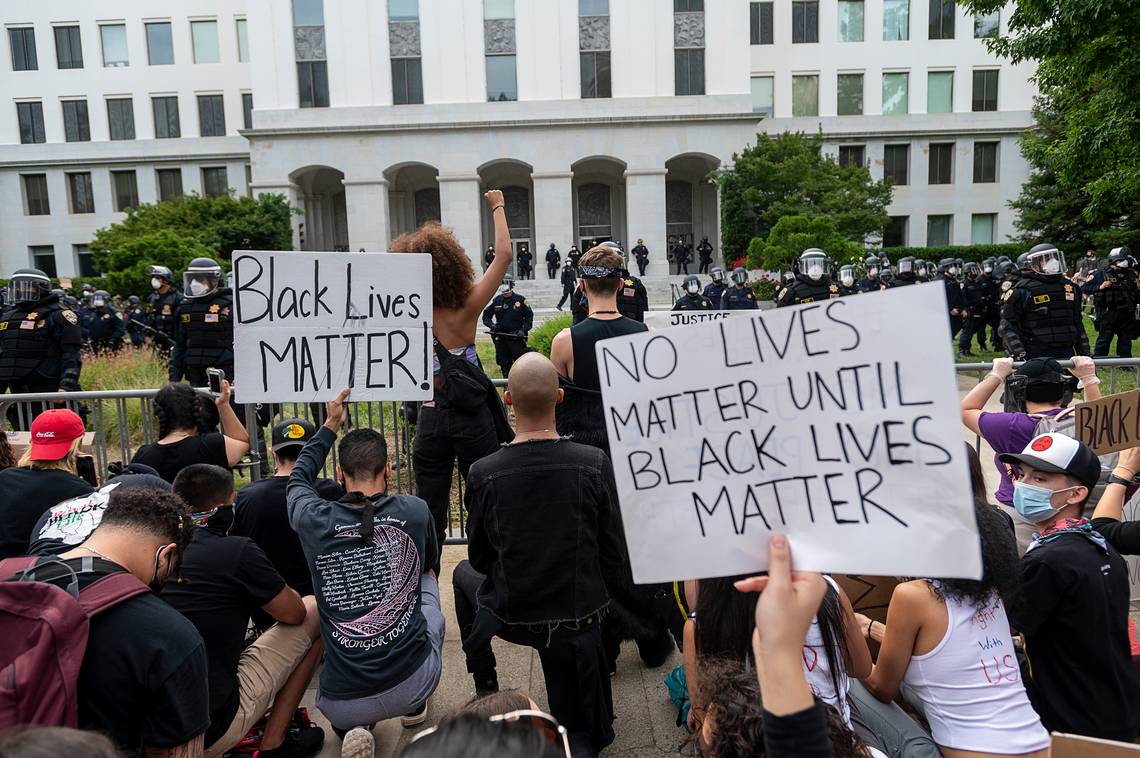
In the past days, we have all witnessed the unjustifiable and unforgivable death of George Floyd at the hands of police, and thousands of peaceful demonstrators taking to the streets to demand justice and accountability. We have also seen property destruction and the enactment of a curfew for the first time since 1942.
We find ourselves living in multiple simultaneous, interlocking challenges: the public health crisis of the COVID-19 pandemic; the economic crisis spurred by the actions to address the pandemic; the longstanding social- and racial-justice crisis exacerbated by COVID-19 and set aflame by Floyd’s death; and a crisis of trust in leadership on all sides.
Understandably, we may despair. Yet, “It is possible to hold two contradictory truths at the same time,” Sacramento Mayor Darrell Steinberg said early Monday morning, in a good reminder of the resilience of the human mind and heart. While the moments of our last weeks and days may hold despair, they also hold hope.
Our hope in these times comes from the many people in our communities standing firm and resolved – demonstrators gathering peacefully; volunteers tidying the streets and storefronts in the aftermath of property damage; and the work of so many to connect and listen and understand.
From hope and understanding must come action, in many forms. Valley Vision’s fundamental purpose is to make our communities the most livable in the nation – which is, above all, a purpose of hope. For many, however, our communities are not livable. A pathway to truly inclusive economic recovery and growth requires ongoing collaborative actions of many across our communities.
For our part, Valley Vision is acting now to identify and remedy inequalities. Among other things, we’re acting to better target workforce training to current and future middle and high skills jobs; to gather data on regional residents’ resilience to COVID-19 impacts; to bring greater broadband access across the region; to increase digital skills for the jobs of the future; to activate communities about the importance of local air quality, and to support our manufacturing sector and its many good jobs.
“The ultimate measure of a man is not where he stands in moments of convenience and comfort, but where he stands at times of challenge and controversy.” Martin Luther King’s words from 1963 ring just as true fifty-seven years later. In these times of challenges and controversy, we are proud to be standing together in the Sacramento region as we build a just, equitable, and prosperous future for all of us.
Meg Arnold is Interim CEO of Valley Vision.